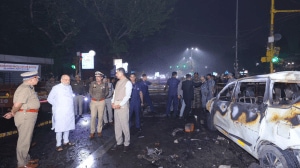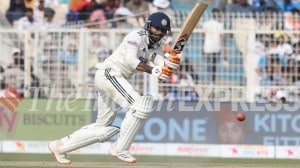What the world is reading
The Economist could not be more unequivocal in its first cover of 2008: Pakistan is, it says, “the most dangerous place in the world”.

The Economist could not be more unequivocal in its first cover of 2008: Pakistan is, it says, “the most dangerous place in the world”. After Benazir Bhutto’s assassination in Rawalpindi, its leaders considers the worst case scenarios: Pakistan being in the absolute grip of the local Taliban, implications for a country struggling with sectarian divisions if conspiracy theories about the complicity of security agencies in her death, disintegration of the PPP. Yet: “Two things could still help arrest its slide into anarchy, improbable though both now seem.” The first: a credible investigation into the killing and the security lapses that allowed it. The second: a fair election. Both require a show of good faith by the security forces, something that cannot be taken for granted. Concludes the leader: “It is time to impress upon him (Musharraf) and the generals still propping him up that democracy is not the alternative to stability. It is Pakistan’s only hope.”
With crises piling up in Pakistan, Time too inquires into America’s role. It notes the repeated mismatch between policies neatly made in Washington and the reality on the Pakistani street. Also, it emphasises the US’s explicit support to military rulers: “Ironically, American support for military dictators has been in the pursuit of US interests not in Pakistan but in neighbouing countries — to balance Soviet influence in India or to defeat Al-Qaeda and the Taliban in Afghanistan. But the US has rarely kept its eye on the ball. In the 1980s, Washington aided the regime of General Mohammed Zia ul-Haq, using Pakistan as a fulcrum to help pry the Soviet army out of Afghanistan. The policy succeeded — but when victory was assured, the US lost interest, while thousands of young Muslim extremists who had been armed to combat the communists turned their weapons against Pakistan and the US. With perverse timing, Washington deserted the elected but unstable governments that followed Zia and imposed economic and military sanctions on Pakistan for its effort to develop nuclear weapons. ‘That’s where we began to lose Pakistan,’ says (General) Zinni. Since 9/11, the US has cozied up to Pakistan once more. More than $10 billion in US aid has flowed into Pakistan since 2001, most of it intended to fund the fights against al-Qaeda and remnants of the Taliban. But US officials acknowledge that much of the cash has been diverted to defence programs aimed at India, itself now a US ally.”
 Newsweek profiles Baitullah Mehsud, “Al-Qaeda’s newest triggerman”, accused by Islamabad for the attack on Bhutto. He has never been photographed, and: “Baitullah’s alleged emergence as the triggerman in this grand scheme illustrates the mutability of the jihadist enemy since 9/11. As recently as June 2004, Iraq was said to be Al Qaeda’s main battleground, and Abu Mussab al-Zarqawi was the terror chieftain whom US authorities worried about most. Baitullah was then a largely unknown subcommander in South Waziristan. But that same month, a US Hellfire missile fired from a Predator drone killed Nek Mohammad, the young, dashing and publicity-hungry tribal leader in Waziristan. Al Qaeda and tribal militants promoted the young Baitullah to a command position. His equally young Mehsud clansman, Abdullah Mehsud — who had recently been released from two years of detention in Guantanamo — also seemed to be a rising star. But after the botched kidnapping of two Chinese engineers, a local council backed by Al Qaeda removed Abdullah and replaced him with the little-known Baitullah, who was seen as being more levelheaded. (Abdullah was later killed in a shoot-out.)”
Newsweek profiles Baitullah Mehsud, “Al-Qaeda’s newest triggerman”, accused by Islamabad for the attack on Bhutto. He has never been photographed, and: “Baitullah’s alleged emergence as the triggerman in this grand scheme illustrates the mutability of the jihadist enemy since 9/11. As recently as June 2004, Iraq was said to be Al Qaeda’s main battleground, and Abu Mussab al-Zarqawi was the terror chieftain whom US authorities worried about most. Baitullah was then a largely unknown subcommander in South Waziristan. But that same month, a US Hellfire missile fired from a Predator drone killed Nek Mohammad, the young, dashing and publicity-hungry tribal leader in Waziristan. Al Qaeda and tribal militants promoted the young Baitullah to a command position. His equally young Mehsud clansman, Abdullah Mehsud — who had recently been released from two years of detention in Guantanamo — also seemed to be a rising star. But after the botched kidnapping of two Chinese engineers, a local council backed by Al Qaeda removed Abdullah and replaced him with the little-known Baitullah, who was seen as being more levelheaded. (Abdullah was later killed in a shoot-out.)”





- 01


























